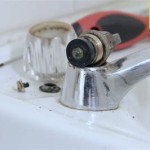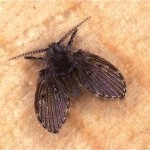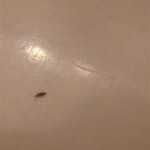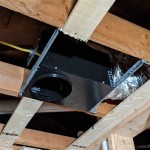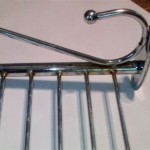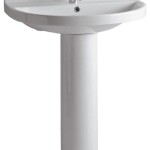What's The Best Way To Remove Mold From Bathroom Walls?
Mold growth in bathrooms is a common problem. The combination of moisture, humidity, and warmth creates an ideal environment for mold spores to thrive. Mold can appear as black, green, or white spots or patches on bathroom walls, grout, ceilings, and other surfaces. Not only is it unsightly, but mold can also pose health risks, particularly for individuals with allergies or respiratory problems. Therefore, it's essential to address mold growth promptly and effectively.
While numerous solutions exist for removing mold from bathroom walls, the best approach depends on several factors, including the type of mold, the extent of the infestation, and the surface material. This article will delve into the most effective strategies for removing mold from bathroom walls, providing a comprehensive guide for homeowners and DIY enthusiasts.
1. Assess the Mold Growth
The first step in removing mold from bathroom walls is to determine the extent of the infestation. A small patch of mold may be easily removed with a DIY solution, while a larger infestation might require professional intervention. Examine the affected areas closely to assess the severity of the mold growth. Consider the following factors:
- Size and location of the mold patches
- Color of the mold (black, green, white)
- Texture of the mold (fuzzy, slimy)
- Presence of any other signs of moisture damage (water stains, warped surfaces)
If you are unsure about the severity of the mold growth or have concerns about potential health risks, it's always advisable to consult a professional mold remediation specialist.
2. Prepare for Mold Removal
Before you begin removing mold from bathroom walls, it's crucial to prepare the area and protect yourself. Mold removal can release spores into the air, posing a risk to your health. Follow these steps for proper preparation:
- Ventilate the bathroom: Open windows and doors to improve airflow and reduce the concentration of mold spores in the air.
- Wear protective gear: Don a respirator mask to prevent inhaling mold spores. Wear protective gloves, goggles, and long-sleeved clothing to minimize skin contact.
- Protect surrounding areas: Cover furniture and belongings in the bathroom with plastic sheeting to prevent mold spores from spreading.
- Remove any loose mold: Gently scrape off any loose mold with a scraper or putty knife to remove visible spores. Discard the debris in a sealed plastic bag.
3. Choose a Mold Removal Solution
Various solutions can effectively remove mold from bathroom walls. The best choice depends on the severity of the infestation and the type of surface you are treating. Here are some commonly used options:
- Solution 1: Bleach: Bleach is a powerful disinfectant that effectively kills mold. Mix one part bleach with three parts water in a spray bottle. Apply the solution to the moldy areas and let it sit for ten minutes before wiping it away with a cleaning cloth.
- Solution 2: Borax: Borax is a natural cleaning agent with antifungal properties. Mix one cup of borax with one gallon of warm water. Apply the solution to the affected areas and let it sit for 30 minutes before rinsing it off thoroughly.
- Solution 3: Vinegar: Vinegar is a natural disinfectant that can also help remove mold. Mix equal parts white vinegar and water in a spray bottle. Apply the solution to the moldy areas and let it sit for 30 minutes before wiping it away with a cleaning cloth.
Always test the chosen solution on an inconspicuous area of the wall first to ensure it doesn't damage the surface. For stubborn mold growth, you may need to repeat the treatment several times.
4. Cleaning the Moldy Surface
Once you've applied the chosen mold removal solution, you can start cleaning the affected areas. Follow these steps:
- Scrub the mold: Use a stiff-bristled brush or a cleaning sponge to scrub the moldy areas thoroughly. Pay close attention to crevices and corners where mold can accumulate.
- Rinse the surface: Rinse the treated areas with clean water to remove any residue from the cleaning solution.
- Dry the surface: Towel dry the affected areas thoroughly to prevent moisture buildup that could lead to future mold growth.
Repeat the cleaning process as needed until the mold is completely removed.
5. Preventing Future Mold Growth
Removing existing mold is only the first step; preventing future growth is equally important. Here are some tips for preventing mold in your bathroom:
- Address moisture sources: Identify and eliminate any sources of moisture in your bathroom, such as leaky pipes, clogged drains, excessive humidity, or poor ventilation.
- Improve ventilation: Ensure adequate ventilation by using a fan or opening windows to circulate fresh air.
- Use a dehumidifier: A dehumidifier can help reduce humidity levels in your bathroom, making it less hospitable to mold growth.
By following these tips, you can keep bathroom walls mold-free and create a healthier environment for yourself and your family.

How To Remove Mold From Walls True Value

How To Get Rid Of Mold In The Shower On Bathroom Walls Clorox

How Do I Remove Black Mould From Shower Floor

The Ultimate Guide On How To Clean And Get Rid Of Mold Pro Housekeepers

How To Remove Mold From Bathroom Walls 6 Cleaning Tips

How To Get Rid Of Mold In Bathroom 2024 Tips From Puroclean

Bathroom Ceiling Mold Removal When To Clean Call Branch Environmental

Black Mold In The Shower How To Clean It Kitchen With Matt

Kill Bathroom Mould Without Bleach Electrodry Blogs

The Ultimate Guide On How To Clean And Get Rid Of Mold Pro Housekeepers
Related Posts
